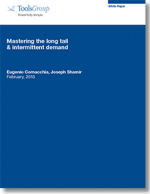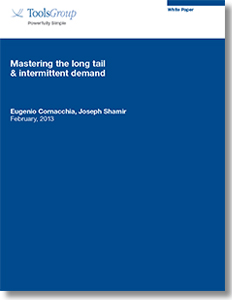Mastering the Long Tail & Intermittent Demand
If you wish to achieve high customer service levels, you have to master the shape of the demand distribution and, in particular, its right-hand tail, you must avoid shortcut simplifications and approximations in the modeling that will prevent you from getting close to your goal.
We have seen the sequence of problems that make intermittent demand and the long tail environment challenging.
First, intermittent demand has intrinsically high variability and probability distributions that are highly skewed.
As a result, classic demand and inventory models do not perform well in this environment.
Finally, this shortcoming in business systems causes performance gaps that inevitably lead to inefficient manual intervention and create some degree of bullwhip effect.
Inventory becomes seriously misaligned, and company business goals cannot be achieved.
The alternative is to have systems and processes in place that effectively manage the long tail.
The key to mastering intermittent demand is fairly basic and yet very critical.
You must accurately and reliably model demand both in the “head” and in the “tail” and this must be done in a totally seamless way.
It must be done without taking convenient shortcuts which may simplify the problem but which lead to inaccurate models and output erroneous decisions.
Beyond the benefits related to the gain in precision, a “no-shortcuts” approach will engender system confidence in the users/planners.
This in turn will reduce manual overrides to a minimum and eliminate a key source of bullwhip amplification in the supply chain.
By eliminating the shortcuts and mastering the full probability distributions of both demand and inventory across a wide range of possible types of behavior, unprecedented efficiency and service level excellence are achievable even in the increasingly challenging world full of intermittent demand.
What’s Related




Favorites





